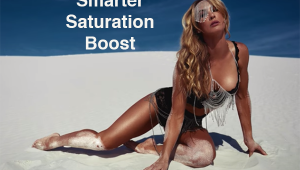How She Got the Shot: Deborah Sandidge Uses Multiple Exposures For Maximum Impact

© Deborah Sandidge
The scene is often just the starting point of a Deborah Sandidge photograph. “It’s visualization,” she says. “I’m looking at a scene and imagining what’s going to happen over time.” What was going to happen at the San Antonio, Texas, River Walk was the continuing passage of the water taxis. Sandidge knew they were the key to an expressive, dramatic photograph, one that would get as close as possible to picturing the passage of time.
She also knew it was going to take more than one exposure to make that photo. Standing on a bridge over the river, her camera on a tripod and tripped with a cable release, she made test exposures, finding that four seconds captured “more of a suggestion of the boat, rather than the boat itself or just a blur of color.”
Sandidge took three exposures as taxis traveled on the river and later used Photoshop’s layer masks to combine them.
“The camera was taking almost the exact same photograph in each exposure,” Sandidge says. “The only thing different was the motion of the boats on the river, and in Photoshop I was basically controlling what shows through and what doesn’t.”
She also used the program’s Lighten blend mode to control the different transparencies of the light.
“When I look at a scene or an area,” Sandidge says, “I’m always checking the weather, the clouds, the wind direction, and the light. And I’m thinking, What tools and techniques can I use to set my image apart from everybody else’s? Because we all have the same opportunities, and we’re all looking at essentially the same scenes.”
Visit Deborah Sandidge’s website, deborahsandidge.com, to view a variety of images, learn about her workshops, and check out tips and techniques at her blog.
- Log in or register to post comments












































